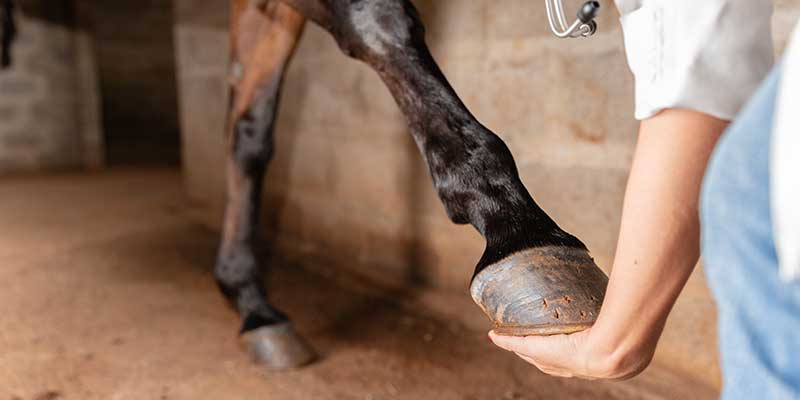
How to Treat a Cut on a Horse Hoof: Essential Tips to Follow
Share
When it comes to maintaining our beloved steeds, understanding **how to treat a cut on a horse hoof** is crucial for Health-conscious Pet Owners. A horse's hoof is truly its foundation, and any injury, including cuts, can lead to severe complications if not addressed promptly and effectively.
In this comprehensive guide, we will delve deep into the signs of a hoof cut, initial first-aid measures, expert recommendations, and preventive strategies. Furthermore, we will explore related issues such as caring for a horse hoof and the importance of regular hoof maintenance.

Common Signs of a Cut on a Horse Hoof
Being vigilant about our horses hooves ensures we can recognize when something is awry. Here are some common signs to look out for:
- Visible Wounds: Look for any noticeable cuts or abrasions on the hoof surface.
- Swelling: Any swelling around the hoof area might indicate infection or irritation.
- Lameness: If your horse is limping or showing discomfort while walking, it could be due to a hoof injury.

Immediate First Aid for Horse Hoof Cuts
Upon discovering a cut on your horses hoof, quick and effective action is vital:
1. Preliminary Assessment
Before you begin treatment, assess the severity of the cut. Check for debris, deep lacerations, or signs of infection.
2. Clean the Area
Using lukewarm water, gently wash the wound to remove any dirt or debris. Avoid harsh chemicals that could irritate the area.
3. Disinfect
Apply a horse-safe antiseptic solution such as iodine or chlorhexidine. This step is crucial in preventing infections.
4. Bandage the Cut
Using a clean bandage, wrap the hoof gently to protect it from further injury. Ensure it's not too tight to maintain circulation.

When to Call a Veterinarian
While minor cuts can often be treated at home, seek professional help if:
- The cut is deep or large.
- You notice excessive bleeding.
- Signs of infection develop, such as pus or fever.

Long-term Care and Prevention
As Health-conscious Pet Owners, long-term care is just as necessary as immediate treatment. Here are steps you can take to help prevent hoof injuries:
1. Regular Hoof Maintenance
Frequent hoof care is essential for keeping your horse healthy. Consider checking out how to clean a horse hoof.
2. Proper Nutrition
A well-balanced diet contributes to strong and healthy hooves. Foods rich in biotin and zinc are particularly beneficial.
3. Adequate Exercise
Allowing your horse to exercise helps strengthen hooves and reduces the risk of injuries.
4. Routine Veterinary Checks
Regular check-ups with your veterinarian will help ensure that any potential issues are caught early.
Frequently Asked Questions (FAQs)
1. How can I tell if my horses cut is serious?
If the cut is deep, bleeding excessively, or shows signs of infection, it is crucial to consult a veterinarian.
2. Can I use human antiseptics on my horse?
No, you should only use horse-specific antiseptics to avoid irritating your horse's skin.
3. What are the best ways to keep my horse's hooves healthy?
Regular cleaning, proper nutrition, adequate exercise, and routine veterinary check-ups are crucial steps.
Conclusion
Knowing **how to treat a cut on a horse hoof** is a valuable skill for any horse owner. By understanding immediate care, long-term management, and preventive practices, you can ensure your horse remains healthy and happy. Always stay vigilant and put your horses well-being first.
For further reading on hoof care, check out how to trim a horse hoof for beginners and learn more about hoof health.
As an Amazon Associate, I earn from qualifying purchases.
